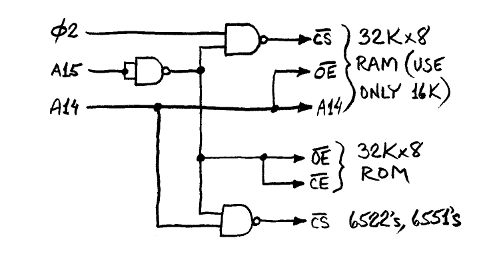Well, we happen to have some native German speakers in the forum, so one could ask for help with the "decoding".

//Reading German technical manuals requires having a bigger "stack frame" in your backhead,
//because the meaning of a sentence sometimes only could be "evaluated" after reading it to the end.
What really freaks me out is Chinese text:
You have a block of 5 odd looking symbols, and just setting a tiny dot there into a different position could make the difference
between "my dear valued husband" and "hepatitis". //I'm not making this up.
Considering that a lot of the electronics stuff tends to be made in China nowaday,
we should try to get some native Chinese speakers into the forum, but I'm getting _way_ off topic...
;---
For 1..2MHz PHI2, using open collector outputs with pullup resistors would do,
but sooner or later one would want to rise the PHI2 frequency of his 6502 system,
and then the resistance of the pullup resistors would have to become too small for making open collector outputs a practical thing.
//That problem with the ghost interrupts at 20MHz PHI2 with open collector /IRQ pins.
So I would suggest to start with an address decoding logic like in Garth's 6502 primer. //The link is up in the thread.

If things are getting more complicated, there still is 74HCT138\74HCT139.
Note, that the 6522 has a high_active and a low_active chip select input,
creatively making use of this could simplify the address decoding when building a 6502 computer.
//Ed: you could try to use line feeds for breaking long sentences into more digestible chunks, could you ?








